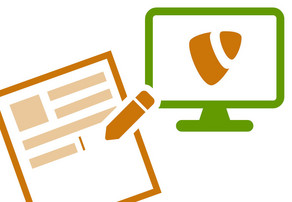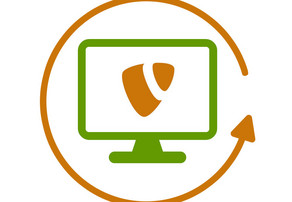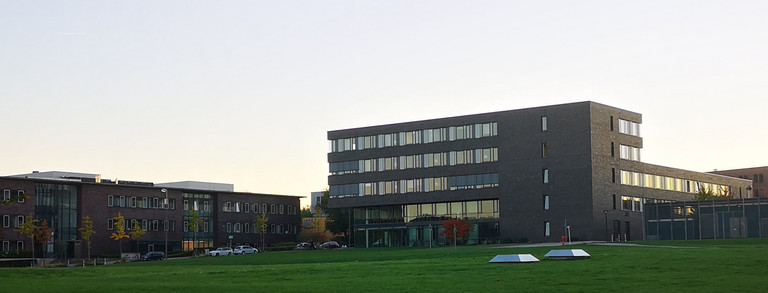How to „Copyright“
Why are Copyright Notices Necessary?
From a legal point of view, although we as TU Dortmund acquire the rights to use images, the copyright always remains with the photographer and they must be named when their photos are used. In addition to the photographer/originator, the source must be named. This can be the TU Dortmund, but it can also be Pixabay, Shotshop or another image portal. Likewise, the source can be "private".
What is to be considered?
The individual areas (e.g. ZSB, UB, ITMC) are part of the TU Dortmund University - in other words, the TU Dortmund University is our umbrella brand. We do not give the copyright notice in small parts, but always with the large umbrella brand - TU Dortmund. Therefore, copyright notices should be displayed in the following form: Author/TU Dortmund. Example: Felix Schmale/TU Dortmund.
It is advisable to check the image title and alternative text of the images when maintaining the copyright notices in order to ensure the accessibility of the website.
Copyright with Personnel Photos
For staff photos, too, the correct specification is "Copyright holder/rights of use holder" by default. Therefore, in the case of photos of TU Dortmund University employees, it is usually not the person depicted who holds the copyright, but the person who took the photo. Only if the person depicted took the photo themselves (selfie/time release) are they also the copyright holder.
When does TYPO3 display a copyright notice?
Images can be shown in TYPO3 in many different contexts, i.e. by including different elements. The elements determine whether a copyright is displayed directly or not.
No copyright is displayed for:
- Person tiles
- Logo bar
- Event tiles
- News tiles
- Image gallery (the copyright notice is displayed in galleries only when the image is enlarged)
- Testimonial tiles
- Off-Canvas Menu
Click-Enlarge
The "Click-Enlarge" option ensures that you can enlarge the image with one click. Then no copyright notice is displayed in the small preview, but only in the enlarged view. Since many images are not reasonably recognizable without enlargement, there are hardly any reasons to deactivate the click-enlargement.
What Copyright Notice Do Images From Photo Services Get?
- Pixabay:
- Indication without naming the author
- Example: Pixabay
- Shotshop:
- Name of the author/Shotshop.com
- Example: First name Last name/Shotshop.com
- Photocase:
- Username/photocase.de
- Example: username/photocase.de
- Adobe Stock:
- Photographer/stock.adobe.com
- Example: First name Last name/stock.adobe.com
- Shutterstock:
- Artist name/Shutterstock.com
- Example: Artist name/Shutterstock.com
Use of Stock Images in Social Media
On social media (Facebook, Twitter, etc.), copyright notices must also be provided for the images used. The rules differ depending on the provider.
- Shotshop, Adobe Stock: Social media use only with source attribution in the image (e.g. watermark).
- Photocase: Source reference must be in the text, but not in the photo.
- Pixabay: Source citation in text desired, but not mandatory.
If photos from other photo services are used, you must check the terms of use or licensing conditions to see which rules apply.
Logo Marking
Even though this is often not the case, to be on the safe side we should always start from the principle that a logo is protected by copyright. So before we use a logo, we should clarify whether the relevant institution or company has no objection to its use and whether a copyright notice (a natural person) is required. The institution itself may be the copyright holder. This naming is not required under German law, but it is also not harmful, so that a reference to the ownership of the rights can be given if the owner wishes.
Recommendation: If in doubt, ask the institution/company whether the logo should be used and whether or how it should be marked.
Possible labeling variants:
- Originator (natural person)/Institution
- Institution
- no indication
Questions regarding the use and integration of logos can often be clarified for larger companies by reading the brand guidelines, which are usually available on the website.
Side note: Links to pages of commercial providers/companies
If commercial pages are to be linked, this should be coordinated in advance with the Research Third-Party Funding Management and Legal Affairs department so that there is no risk of inadmissible sponsorship.
If a sponsorship agreement already exists and it is contractually agreed that a company is to be linked, the company also has a claim to this. Without consulting the company or adjusting the contract, the link may not even be waived.
Marking Screenshots
Since the creation of screenshots is not a creative act, there is also no author. Only the content depicted in the screenshot may be protected by copyright, for example, if it is a protected photograph, work of art or similar. In this case, the respective author (a natural person) must be named.
In the case of a screenshot of software or similar, the owner of the rights of use (e.g. the manufacturing company) can be named, but this is not required.
Screenshots from Zoom Conferences or Similar.
As with screenshots, it is generally not necessary to identify the author/rights holder. If persons are depicted, however, the right of personality (right to one's own image) is affected. Therefore, it must be clarified whether the person depicted agrees to the publication.
In summary, the following applies to the labeling:
- Is only obligatory if copyrighted works can be seen on the screenshot.
- The owner of the rights of use can, but does not have to be named.




